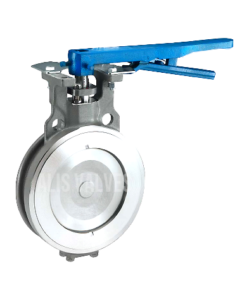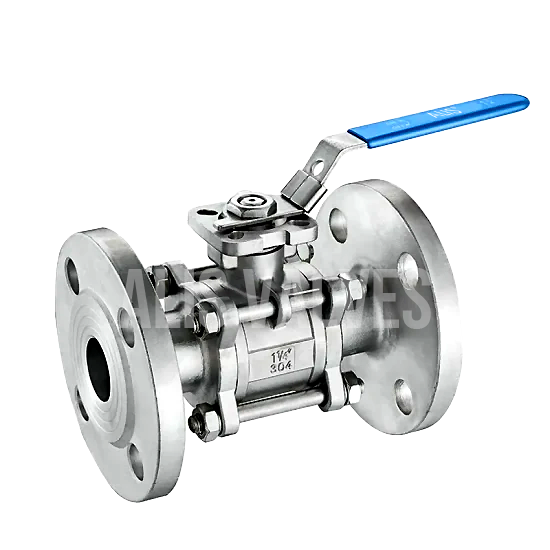Industrial valves are the silent, yet indispensable, components that drive numerous industries, from energy production to manufacturing, water treatment, and chemical processing. Historically, these valves have been simple mechanical devices designed to control the flow of liquids, gases, or slurries through pipelines. However, recent advancements in technology are pushing industrial valves into a new era of innovation, efficiency, and connectivity. Smart technologies, in particular, are revolutionizing the way valves are used, maintained, and integrated into industrial systems, leading to higher productivity, lower costs, and enhanced safety.
This article explores how smart technologies are reshaping the industrial valve sector and what the future holds for this critical aspect of industrial infrastructure.
The Shift Toward Smart Valves
The rise of smart valves has been driven by the increasing demand for automation and digitalization in industrial processes. As industries evolve, the need for more precise control, real-time monitoring, and predictive maintenance grows. Smart valves meet these demands by incorporating sensors, actuators, and communication technologies that allow them to interact with other equipment and control systems.
At the core of a smart valve is the ability to gather and transmit data. Embedded sensors can monitor parameters like pressure, temperature, and flow rate, providing operators with real-time insights into valve performance. These sensors can also detect leaks, blockages, or malfunctions, allowing for immediate action to be taken before problems escalate. With these capabilities, smart valves are not only optimizing operations but also contributing to sustainability by reducing energy waste and minimizing downtime.
How Smart Technologies Are Changing Industrial Valve Applications
- Real-Time Monitoring and Control
Traditionally, valve performance was assessed through periodic manual inspections. Smart valves eliminate this need by offering continuous, real-time monitoring of operational conditions. Through integrated sensors, these valves provide data to operators in real-time, enabling them to make informed decisions on process adjustments or maintenance needs. This level of control allows for quicker responses to issues and minimizes the risk of catastrophic failure in industrial systems.
- Predictive Maintenance
One of the most transformative aspects of smart valve technology is predictive maintenance. By continuously analyzing data from sensors, smart valves can detect wear and tear, corrosion, or other signs of impending failure long before they become critical. This allows for scheduled maintenance to be conducted only when necessary, avoiding costly downtime and extending the lifespan of valves and associated machinery. Predictive maintenance not only saves money but also ensures that industrial processes remain uninterrupted.
- Integration with Industrial Internet of Things (IIoT)
The integration of valves with the Industrial Internet of Things (IIoT) is another game-changer. IIoT networks allow devices and machinery across an industrial site to communicate and share data. Smart valves play a vital role in these systems by acting as both data sources and actuators. They can automatically adjust flow rates, pressures, or temperatures based on real-time data from other IIoT-connected devices, optimizing the entire industrial process. For instance, in a chemical plant, a smart valve can receive data from a temperature sensor in a reactor and adjust the flow of a cooling liquid to maintain optimal reaction conditions.
This interconnectedness results in improved process efficiency, energy conservation, and reduced human intervention. Moreover, the ability to remotely control and monitor valves through IIoT systems offers flexibility, especially in hazardous or hard-to-reach environments.

- Enhanced Safety
Safety is paramount in industries like oil and gas, chemical processing, and energy production, where high pressures and hazardous materials are often involved. Smart valves improve safety by providing real-time data on critical parameters such as pressure, temperature, and flow. In case of an abnormal reading, automated shutoff mechanisms can activate, preventing potential accidents or system failures.
For instance, in oil and gas operations, smart valves can detect changes in pressure that indicate a potential leak or pipeline failure. The valve can then automatically close or restrict flow to mitigate the risk. This capability not only enhances safety but also reduces the environmental impact of leaks or spills.
- Energy Efficiency and Sustainability
Industries are under increasing pressure to reduce their carbon footprint and embrace sustainable practices. Smart valves contribute to this by optimizing the efficiency of industrial processes. By providing precise control over flow rates and pressures, they help to minimize energy consumption and reduce waste. Additionally, predictive maintenance features mean that valves are only serviced or replaced when necessary, reducing material waste and the carbon emissions associated with frequent replacement parts.
Moreover, by optimizing industrial processes, smart valves help companies meet environmental regulations and standards, further reinforcing the shift toward sustainable and eco-friendly operations.
Industries Benefiting from Smart Valves
Smart valve technology is transforming a wide range of industries:
- Oil and Gas: In this sector, smart valves are helping companies reduce operational risks, manage pipelines more effectively, and increase energy efficiency. Real-time monitoring and predictive maintenance capabilities also help to avoid environmental disasters such as oil spills.
- Water and Wastewater Treatment: Water utilities benefit from smart valves through improved leak detection, better resource management, and enhanced operational efficiency. The ability to monitor water quality and flow rates in real-time contributes to both environmental protection and cost savings.
- Energy: Power plants, especially those that utilize renewable energy sources like wind and solar, are increasingly relying on smart valves to optimize fluid handling systems. Smart valves contribute to the overall efficiency and reliability of energy generation and distribution systems.
- Chemical Processing: The chemical industry benefits from the precision and control offered by smart valves. By providing real-time feedback on flow rates and chemical reactions, smart valves help to ensure consistent product quality and improve safety standards.
- Manufacturing: In manufacturing, smart valves are playing a critical role in process automation, reducing human error, and optimizing production cycles. Smart valves in automated factories can instantly adjust fluid or gas flows to maintain consistent production conditions, reducing wastage and downtime.
The Future of Smart Valves
The evolution of smart valves is still in its early stages, and future developments promise even greater benefits. One of the key areas of advancement will be the further integration of artificial intelligence (AI) and machine learning into valve control systems. AI algorithms can analyze data collected by smart valves to optimize performance, predict failures more accurately, and even learn from operational patterns to further improve efficiency.
Another exciting development is the use of advanced materials in smart valves. As industries demand valves that can withstand extreme conditions—such as high temperatures, pressures, and corrosive environments—innovations in materials science will ensure that smart valves remain durable and reliable, even in the most challenging applications.
Moreover, the shift toward greener energy sources and sustainability will drive further innovation in smart valve technology. Valves designed to minimize energy consumption and environmental impact will become increasingly important, particularly as industries work to meet stringent environmental regulations.
Conclusion
Smart technologies are transforming industrial valves from passive components into active participants in the digitalized, interconnected industrial landscape. By providing real-time data, predictive maintenance, enhanced safety, and improved energy efficiency, smart valves are at the forefront of modern industrial innovation. As industries continue to evolve, the role of smart valves will only become more prominent, helping companies achieve higher levels of productivity, sustainability, and safety.
The future of industrial valves is undoubtedly smart, and this technology will continue to play a crucial role in driving industrial progress across a wide range of sectors.



